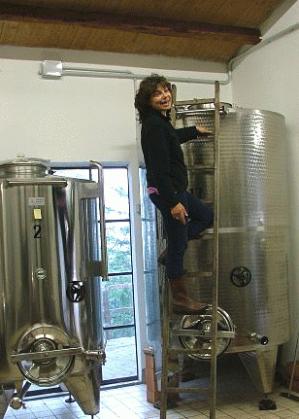| « Previous | News | Next » |
May 21, 2014
Cream Import Spotlight
Emilia Romagna’s reputation for cuisine is indisputable…but when it comes to wine, it’s historically been on less solid ground. That is, until recently, as an increasing number of excellent wines have been hitting the scene from the Sangiovese di Romagna DOC. By carefully managing yields and plant density, producers have been able to show how distinctive and delicious this specific clone of Sangiovese can be.
After Sangiovese’s PR problem in the mid-twentieth century—the use of Trebbiano as a blending grape did it no favors—producers in central Italy set about systematically studying the grape and its myriad clones. What they found, aside from how extremely sensitive the grape is to terroir and growing conditions, is that the finest clones (R25 and T19) are in fact from Romagna. To underscore the importance of this clone, the Sangiovese di Romagna DOC rules are currently set to change from 80 percent Sangiovese to 95 percent. With excellent raw material and savvy producers, these wines show that this is the most important of the Sangiovese zones outside of Tuscany.
 Giovanna Madonia is one such producer. She was introduced to Romagna wine culture by her father, who was elected the first president of the Consortium of Wines of Romagna. She meticulously researched clones and terroir before building her eponymous winery on the hill of Montemaggio in Bertinoro, in the southeastern part of the region. Her vineyards are planted between 650 and 1,000 feet. on calcareous clay soil, with an optimal southwest exposure, then bush-trained to maximize time in the sun. She further controls each factor in the cellar, fermenting in stainless steel then aging for 12 months in French Barriques and Tonneaux.
Giovanna Madonia is one such producer. She was introduced to Romagna wine culture by her father, who was elected the first president of the Consortium of Wines of Romagna. She meticulously researched clones and terroir before building her eponymous winery on the hill of Montemaggio in Bertinoro, in the southeastern part of the region. Her vineyards are planted between 650 and 1,000 feet. on calcareous clay soil, with an optimal southwest exposure, then bush-trained to maximize time in the sun. She further controls each factor in the cellar, fermenting in stainless steel then aging for 12 months in French Barriques and Tonneaux.
Her 2008 Riserva Ombroso is 100 percent Sangiovese from vines planted in 1993. She only makes this wine in the best vintages, and her great care translates into a beautifully balanced varietal expression. It is bright and vivid with excellent acid. The nose exudes tar, tea, mint, and flowers, with violets and cherries on the palate. The finish is long with notes of cherry cordial. This clone is known for softer tannins than its Tuscan counterparts, and the effect here is sumptuous and elegant. This would pair beautifully with so much of the region’s cuisine, but, with taglietelle al ragu, it would sing.
